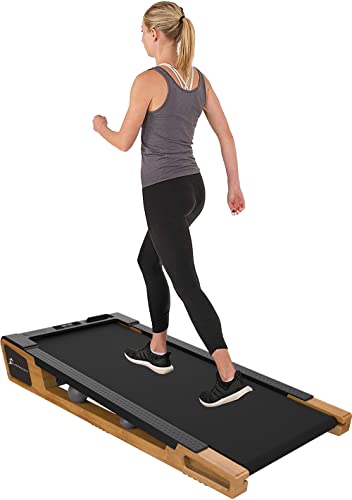Non-Folding Treadmills: The Ultimate Guide for Fitness Enthusiasts
As home physical fitness continues to gain traction, many individuals are looking for devices that fulfills their requirements without jeopardizing quality or performance. One crucial gamer in this arena is the non-folding treadmill. Unlike folding treadmills, which are developed for density and mobility, non-folding treadmills are generally more robust, offering enhanced resilience and machine performance. This guide will explore the features, benefits, constraints, and choices readily available for non-folding treadmills.
What is a Non-Folding Treadmill?
A non-folding treadmill is a stationary exercise machine that does not have the ability to fold its deck for storage. Particularly designed to be a long-term fixture in fitness spaces, these treadmills typically have a bigger footprint, permitting for a host of comfy functions fit for severe runners and gym-goers.
Advantages of Non-Folding Treadmills
- Stability and Durability: Non-folding treadmills normally have a sturdier building, offering them boosted stability during high-intensity exercises. They are constructed to deal with diverse user weights and running paces, which can lengthen their lifespan.
- Advanced Features: Many non-folding models come equipped with sophisticated technological features, such as clever display systems, automated incline adjustments, and pre-set workout programs, which cater to major fitness enthusiasts.
- Larger Running Surface: These treadmills often provide a wider and longer running location, which can be especially beneficial for runners who prefer to train at greater speeds or for those with longer strides.
- Better Motor Performance: Non-folding treadmills generally have more powerful motors compared to their folding equivalents, permitting much better efficiency during intense running sessions.
Drawbacks of Non-Folding Treadmills
- Space Requirements: Since they do not fold, non-folding treadmills need more room in your house or fitness center. If area is a restriction, this may be an important consideration.
- Absence of Portability: These machines can be troublesome to move. It is challenging to relocate a non-folding treadmill compared to a folding one, which may be a disadvantage for those who move frequently or rearrange home gym designs often.
- Price: Non-folding treadmills are usually more expensive than folding treadmills, generally due to their sophisticated functions and long lasting build.
Secret Features to Consider
When looking for the right non-folding treadmill, a number of functions ought to be considered to ensure you make a notified decision:
| Feature | Value |
|---|---|
| Motor Power | Look for a motor of at least 2.5 CHP for strong efficiency. |
| Belt Size | A belt width of 20 inches or larger is ideal for convenience and security. |
| Incline Range | An incline of 10% to 15% offers more exercise range. |
| Technology Integration | Consider models with Bluetooth abilities, exercise apps, and heart rate monitoring. |
| Service warranty | A robust warranty (at least 10 years for the frame and motor) suggests resilience. |
Top Non-Folding Treadmills on the Market
Here is an extensive introduction of some of the leading non-folding treadmills presently readily available:
| Treadmill Model | Motor Power (CHP) | Running Surface (inches) | Incline (%) | Price Range (GBP) | Warranty |
|---|---|---|---|---|---|
| NordicTrack Commercial 1750 | 3.75 | 22 x 60 | 15 | ₤ 1,799 - ₤ 2,199 | 10-Year Frame, 2-Year Parts |
| Sole F85 | 3.5 | 22 x 60 | 15 | ₤ 1,699 - ₤ 2,099 | Life Time Frame, 5-Year Parts |
| LifeSpan TR3000i | 2.5 | 20 x 56 | 15 | ₤ 999 - ₤ 1,299 | Life Time Frame, 5-Year Parts |
| ProForm Pro9000 | 3.0 | 22 x 60 | 15 | ₤ 1,499 - ₤ 2,299 | Life Time Frame, 2-Year Parts |
| Horizon Treadmill 7.0 AT | 3.0 | 20 x 60 | 12 | ₤ 899 - ₤ 1,099 | Life Time Frame, 1-Year Parts |
FAQs About Non-Folding Treadmills
1. Are non-folding treadmills better than folding ones?Non -folding treadmills usually offer better stability, resilience, and advanced functions. This makes them perfect for severe runners, but it ultimately depends on specific needs and available space.
2. Best Manual Treadmill -folding treadmill be utilized for walking?Yes! Non-folding treadmills are not limited to running; they can likewise be perfect for walking and can accommodate a wide variety of fitness levels. 3. How much area do I need for a non-folding treadmill?It is recommended to have a devoted area measuring a minimum of 7 feet long and 3 feet large around the treadmill for safe usage. 4. Is it possible to carry a non-folding treadmill?While it can be done, it might need extra effort as they are typically much heavierand bulkier than folding designs. 5. What's the average life-span
of a non-folding treadmill?With routine maintenance and appropriate use, non-folding treadmills can last in between 10 and 15 years or more.
Non-folding treadmills represent a considerable financial investment
for those major about maintaining or improving their health and fitness. With their focus on sturdiness, stability,
and boosted functions, they accommodate users pursuing efficiency and longevity. Picking the ideal model includes thoroughly considering your exercise habits, space accessibility, and spending plan. By comprehending the attributes that make non-folding treadmills an exceptional option, people can make informed decisions that will enhance their home physical fitness experience. Whether it's for walking, running, or high-intensity training, the right non-folding treadmill can be a substantial ally in attaining fitness objectives.

